Author bio:
---------------------------------------------------------------
Hi Freda, welcome over at The Book Plank and for taking your time to
answer these few questions for us.
BP: First off could you give us a short introduction
as to who Freda Warrington is? What are you hobbies, likes and dislikes?
FW: Hello! Where
to start – well, I was born in the middle of England and I still live there;
it’s home, and I love the countryside which has been very inspirational to my
writing. I was an only child who preferred books to the rough and tumble of
other children, and I still tend to be shy and hermit-like. English was my best
subject at school, but I feared that if I studied the subject at university, it
might deter me from writing for life. So I chose an artistic, practical skill
instead, and worked in graphic design for a number of years before becoming a
full-time writer. (Graphics is incredibly helpful in understanding book layout,
fonts, cover design and so on. However, we did everything by hand in those days,
so I’m trying to bring my design software knowledge up to speed). I’ve also
done a handful of strange part-time jobs. I even worked in a timber yard (aka,
lumber yard) for a while – no one ever believes me, but it’s true! Anyway, although
science fascinates me, I lean towards the creative side of things and I also
enjoy crafts such as Tiffany-style stained glass, jewellery, needlepoint and so
on. I even know how to make a traditional teddy bear! My husband Mike – whom I
met through SF/ fantasy conventions – loves to travel, and we’ve been to some
amazing places, which is very handy for creating book settings. I can’t claim
any adventurous activities – no sky-diving for me, and the closest I get to a
martial art is Tai Chi – but I like yoga, swimming and walking. The latter is great
for pondering ideas.
What do I dislike? Do you have all day *grin*? Rudeness. Gender
inequality – it’s still a massive problem all over the world, and it’s like
trying to run up a down escalator, just to hold onto the progress women have
made. People dying too young – we’ve lost too many friends recently, only in
their 50s or 60s. Internet rage – I swear people use a different part of their
brains on the net, because you see a degree of nastiness that most of us would
never use in real life. It’s as if they have no brakes. I’ve seen stuff on
social media so breathtakingly aggressive and malicious, I’ve been close to
quitting the online world altogether. It’s scary.
BP: You
have been writing for a long time already. Do you know when and where you first
decided to write your story?
FW: Almost as soon as I could hold a pencil and
form words, I started writing little stories. My dad used to make up bedtime
fairy tales for me, and he encouraged me to read very early, so I must have got
it from him. If a book particularly inspired me, I would want to create a
made-up world of my own in order to carry on the magic. Animal stories and pony
stories when I was younger, gradually moving on to fantasy in my teens –
writing down my daydreams, in effect. I never really grew out of it! I’ve read
that many writers are inspired to emulate their favourite authors, gradually
developing their own voice and skills as they go. That’s pretty much how it
happened for me. I’m still learning all the time, which is a good thing. As for
the most recent novel, The Dark Arts of
Blood – that goes back a long way, as explained below…
BP: The
Blood Wine series was originally published back in the 90’s what first inspired
you to write the series?
FW: A combination of factors that coalesced over
many years. I’ve long been fascinated by vampires. My mum let me stay up to
watch the Hammer Horror films starring Christopher Lee as Dracula when I was
very young, so that was the start! I didn’t find the films frightening, but I
was very taken with his portrayal of this fascinating, powerful, charismatic
character. It began to drive me nuts that, in every film and book, the vampire
was always a monster to be staked. I wanted something different. I loved the
story Carmilla by J S LeFanu, in
which the vampire Carmilla seems to be such a passionate, vulnerable, human
character – I recall writing a story with a female vampire in my early teens,
although it lay unfinished. I loved the 1979 film Dracula with Frank Langella, a Dracula who was unashamedly alluring
and desirable. Then came the ground-breaking Interview with the Vampire by Anne Rice – unknown when I bought my
copy in the late 70s – and I was spellbound by reading Louis’ rich, detailed of
account of what it was like actually to be
a vampire. For once, the vampire did not get staked! However, Ms Rice still
presented an impenetrable barrier between vampire and human. That was part of
Louis’ tragedy, of course. But I wanted more – I wanted to explore how it would
be if a human being could break through the barrier and come to know such a
mysterious, dangerous, alien creature, not as predator and prey, but as equals.
I knew I had to write something. My characters – Charlotte and Karl – began to
take on life in my imagination.
Now
this was in the early eighties, and I initially began to write the book as an
escape from a particularly difficult time in my life. That early draft was very
different, more of an historical romance set in the 18th century!
Some years later, after my first few novels had been published, I presented the
idea to my agent, who told me, “Vampires are over.” I have heard that “vampires
are over” countless times over the years, yet still they keep rising from the
grave! Anyway, I completely rewrote A
Taste of Blood Wine and changed the setting to the 1920s, a period of
glamour and change that brought a vivid new dimension to the story. Pan
Macmillan published it in 1992.
I
thought one novel would be it. But then a face appeared in my mind’s eye: a
woman with snowy skin, violet eyes, black hair. I knew her name was Violette
and that she was a ballerina, but also that she had some mysterious connection
to the goddess Lilith. From that one image sprang two more big novels, A Dance in Blood Velvet and The Dark Blood of Poppies. I came up
with an outline for a fourth – it was always called The Dark Arts of Blood – but at that time, my editor had left and
they decided to cull much of their fantasy list. So I moved onto other
publishers and other novels, while the outline gathered dust.
BP: Titan
Books has been reissuing the series over the last years, what went through you
when you heard that they were interested in reissuing the books?
FW: A big whoop of joy! I love those books – you
know how authors get completely immersed in their characters? They’re still my
favourites of everything I’ve written. I’d been getting emails from readers
who’d read the first one, but couldn’t find the second and third. This went on
for years. I helped them as best I could, until my own spare copies ran out. So
I knew there was a demand for the books. My agent and I tried for years to get
them back in print – publishers would show interest, dangle us for a few
months, then decide against it. I don’t know their reasons, but it was
incredibly frustrating – especially when the “new wave” of vampire novels
crashed upon the market with Twilight and many others. I concluded the problem
was that my novels weren’t set in an American High School!
Anyway,
I knew the books deserved to be out there. Publishing technology had advanced
drastically by then, so I decided it was time to re-publish them myself. And no
sooner had I decided than Titan made their offer! I’ve been thrilled with the
reissues. I was able to edit the text (curtailing my tendency to waffle), and
the covers are beautiful. Best of all, they commissioned me to write the fourth
book at last. I dusted off the outline, completely reworked it. The writing
took about eighteen months, and here it is!
BP: The
fourth book, The Dark Art of Blood, is out this June if you would have to sell
the book with a single sentence how would it go?
FW: If you love the glamour and decadence of the 1920s... If you prefer your
vampires passionate, grown-up, and not afraid to be vampires... The Dark Arts of Blood offers sumptuous landscapes, silent movies,
blood-lust, political intrigue and mystery.
BP: There
is almost nineteen years between the first book and the fourth book, was it
difficult to pick up the story once again?
FW: Yes and no. The first was a romance, albeit
with a lot of complications, and it just sort of poured out onto the paper. But
I couldn’t do that with the fourth, so the story took a lot more planning.
Also, it’s difficult to write in a rush of white-hot youthful enthusiasm when
you’re older – you think and question everything more. You want to be true to
the characters without repeating yourself. On the other hand, I had re-edited
all three books, so I was immersed in my Blood Wine world again. And I’ve
written a handful of stories over the years, so I’m always dipping in and out,
and it feels like second nature to be with my vampire characters again.
BP:
What has been the biggest challenge you have faced when during the writing of
the Blood Wine series?
FW: I’ve written various different types of
fantasy, and every book has its own challenges. I suppose the first one, A
Taste of Blood Wine, was fairly easy because it came straight from my heart,
although there are some twists and turns in it that I’ve no idea how I thought
up! The challenge really is to keep the central concept – what does it mean to
be a vampire? – fresh. I mean, good heavens, there are thousands of vampire
novels out there now. When I first started, there weren’t many at all. The
girl-meets-vampire trope was actually fairly original at the time, believe it
or not! So to keep my vampires involved in interesting stories that also add
new layers to who and what they are – that is the challenge.
BP: Did
you encounter any specific problems during your writing?
FW: I think the longer you work as an author,
the harder it gets. You’re under pressure not to keep repeating the same ideas.
You’re trying to strike a balance between what you passionately want to write,
and what the market seems to want. That can cause a lot of inner conflict,
which can lead to confidence wobbles and the dreaded “writer’s block” – a
blanket term for all manner of difficulties that impede your writing. You find
yourself constantly questioning what you’re doing, trying to write with an
invisible critic staring over your shoulder, and that’s impossible. Sometimes I
have to battle with myself and just plunge in, write whatever needs to come
out, and then worry later about shaping it into a coherent narrative.
BP: Besides
the problems and difficulties, which chapter, scene or character did you enjoy
writing about the most?
FW: Oh, I liked everything – if I’m hating a particular part
of the story, or a character, that signals that something’s not working and I need
to rethink it, remove it, try a different approach. But I always enjoy writing
about Karl, my male lead. I hesitate to say hero, because he’s not a “good”
vampire as such – he has his own moral code, and he has good intentions, but
he’s not afraid to be ruthless when necessary. Goes without saying, he’s
devastatingly gorgeous. Charlotte has to dig
down a long way through his calm, enigmatic surface, through the dark, sinister
blood-drinking side of him, to the human aspects and vulnerability beneath. So
to me he’s an incredibly attractive, many-layered character and I love him for
that. I think he still has secrets to come out.
BP: The
Dark Arts of Blood is your fourth book in the series, have you already mapped
out how many volumes the series will run?
FW: Ha. That’s a very good question. Not at all
– each book so far is self-contained, although the story runs on from the
previous novel, of course. The series is open-ended… I already have some ideas
for a fifth… and I can’t keep them in the 1920s forever, as perfect as that
period is. Thing is with my vampires, they’ve offered me enormous scope for
exploring all aspects of sexuality, love, friendship, psychology, religious
belief, mythology, politics, you name it – there’s unlimited potential. I’ve
already written a number of short stories set in their world, including a
couple set in the present day (I hope to produce a collection eventually. You
can find a list, and lots more information on my website,
www.fredawarrington.com). I could move backwards and forwards in time – for
example, a novel about Karl and Charlotte set in the 1920s in the
eighteen-month gap between the first and second books. What did they get up to?
More about Karl in the nineteenth century, before he even met Charlotte. So
many possibilities. I don’t know yet, but I feel these characters will be with
me for the rest of my writing life, and that’s the way it should be.
BP:
Next to the Blood Wine series, do you have any other projects that you wish to
pursue in the near future?
FW: Lots to do! Once Dark Arts went to press
earlier this year, I wrote two short stories I’d promised to editors. (One of
them is a Dark Arts spin off – Pierre and Ilona go off to Russia at the start
of the novel and we don’t see them again, so the story is about what they get
up to there. The other is a horror story in a new anthology, Nice Day for a
Picnic, ed. Alex Davis). I also indie-re-issued my 2003 novel about Richard
III, The Court of the Midnight King, to commemorate all the Ricardian events
this year. It’s on Kindle, or available as a paperback from Feedaread.com. Now
I’m working on a new fantasy novel but I daren’t say any more as it’s far too
early. I also have an ongoing project to get my out-of-print titles onto Kindle
this year. And more book ideas… all I need is elastic time and lots of energy!
BP: Everyone
enjoys fantasy in his or her own way. What do you like most about reading and
writing fantasy?
FW: It’s C S Lewis’s fault – the Narnia books
made me fall in love with the idea of walking through the back of a wardrobe
into another world! It’s that daydream again, of meeting elves and gods and
ghosts, heroes and dark lords, walking into a dream landscape that you feel
might be just a breath away from reality. As for writing – you can make things
happen, you can create sweeping epic scenarios, you can examine real-world
issues in a way that is not so easy in mainstream fiction because you have more
freedom of invention, access to allegory. You can ask, “What if…?”
BP: If
you would have to give your top 5 favourite books, which would they be?
FW: I’m never ready for this question because my
list changes all the time! Tess of the D’Urbervilles by Thomas Hardy. The Lord
of the Rings by J R R Tolkien. The Martian Chronicles by Ray Bradbury. A Wizard
of Earthsea by Ursula LeGuin. Blood 20 by Tanith Lee (a new collection of her
vampire stories). This is really impossible – ask again tomorrow, I’ll give you
a different five because, “Oh, I forgot about such and such!”
BP: And
just lastly, can you tell us a bit more of what might be in store for the
readers of The Dark Art of Blood and a possible teaser of what’s might to come?
FW: Lust, guilty
secrets, silent movies, unrequited love, the Swiss Alps and the Algerian
desert, Mussolini, the rise of 1920s nationalist politics, occult rituals,
ghosts and sinister Alpine folklore… and not least, vampires of course! I hope
an extract from the cover blurb will fit the bill:
Charlotte and Karl fall into danger as the
sinister activist Godric Reiniger begins his rise to power. Meanwhile, fiery
dancer Emil achieves his dream to partner legendary ballerina Violette Lenoir -
until his forbidden desire for her becomes an obsession. Rejected, spiralling
towards madness, he seeks solace with a mysterious beauty, Fadiya. But she too
is a vampire, with a hidden agenda…
BP: Thank
you for your time Freda and good luck with your future writing!
FW: Thank you, it was a pleasure!
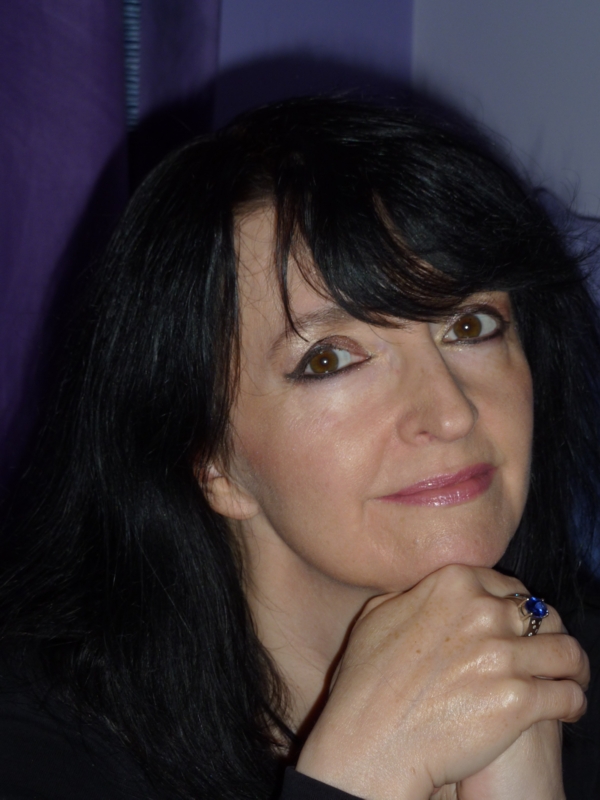
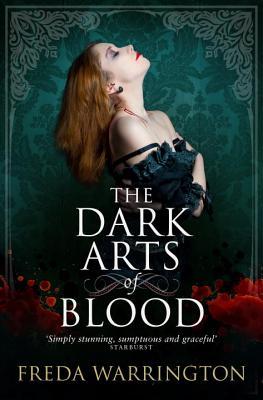
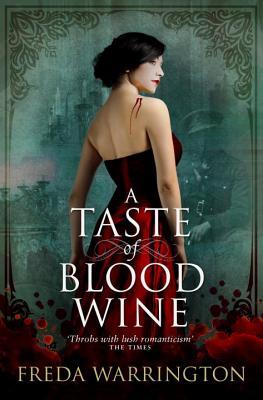
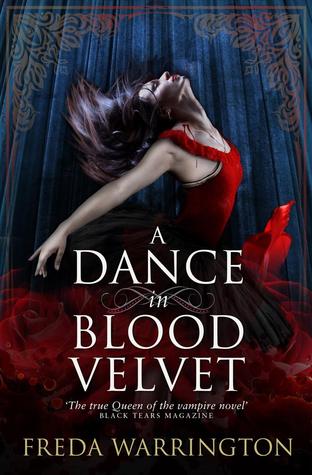
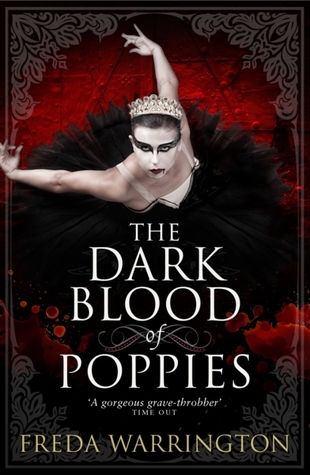
Comments
Post a Comment